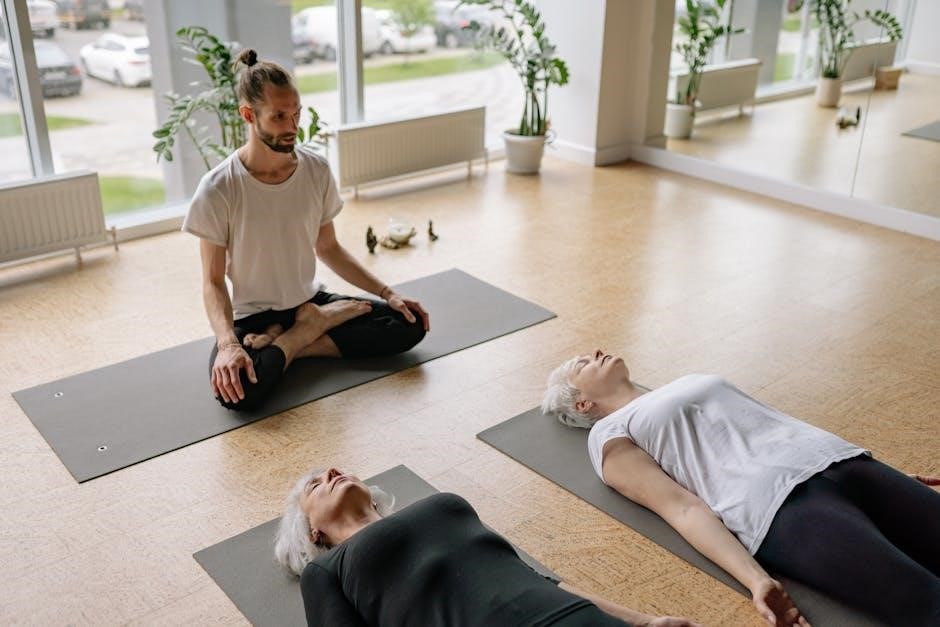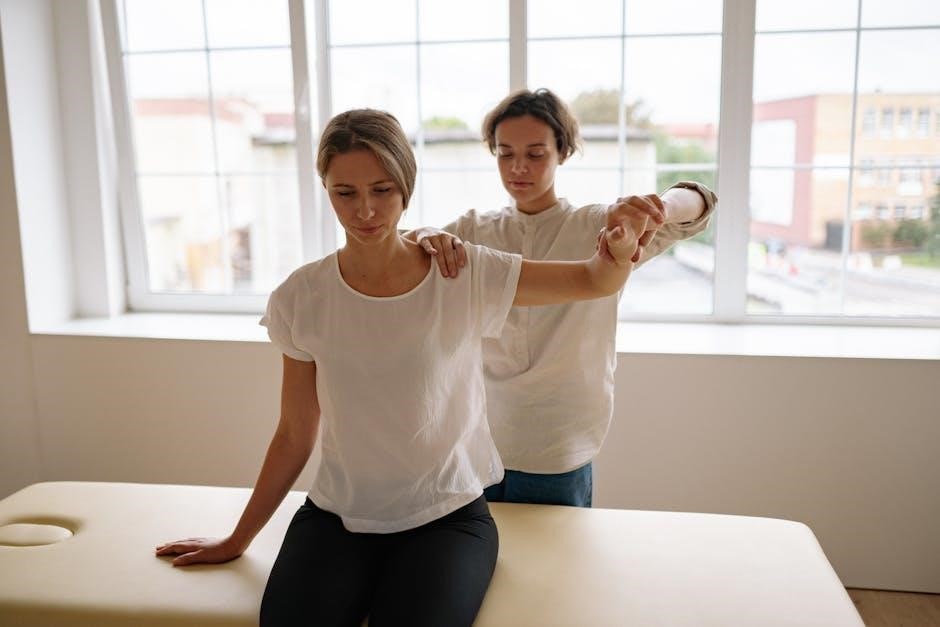
Anal stretching involves gradually expanding the anal sphincter and rectum for comfort or pleasure. It requires patience, proper tools, and lubrication to ensure safety and effectiveness. This guide provides essential information on techniques, safety, and best practices to help you explore anal stretching confidently and responsibly.
What is Anal Stretching?
Anal stretching refers to the practice of gradually expanding the anal sphincter and rectal tissues to accommodate larger objects or enhance comfort during anal activities. It involves using specific techniques, tools, and lubricants to safely increase elasticity and reduce discomfort. This practice is often explored for medical, sexual, or personal comfort reasons. Proper methods are essential to avoid injury and ensure long-term safety. The process requires patience, as the anal muscles need time to adapt. With consistent and gentle effort, the anal passage can become more accommodating while maintaining its ability to contract naturally. It is crucial to prioritize hygiene, use appropriate lubrication, and follow expert guidelines to minimize risks and achieve desired results. Anal stretching is a personal choice and should be approached with careful consideration and education to ensure a positive experience.
Why is Anal Stretching Practiced?
Anal stretching is practiced for various reasons, including enhancing comfort during anal activities, preparing for medical procedures, or exploring sexual preferences. Some individuals engage in it to gradually accommodate larger objects, while others find it a means of personal empowerment or confidence-building. The practice can also address issues like tightness or discomfort during anal penetration. Safety and hygiene are paramount, as improper techniques can lead to injury or infections. Many people explore anal stretching as part of their sexual journey, finding it a way to expand their intimacy and pleasure. It is important to approach this practice with education and caution, ensuring that it aligns with personal boundaries and health goals. By understanding the reasons behind anal stretching, individuals can make informed decisions about their bodies and experiences. Proper techniques and tools are essential for a safe and positive outcome.
Benefits of Anal Stretching
Anal stretching can offer several benefits when practiced safely and responsibly. It may enhance comfort and confidence during anal activities, allowing for a more enjoyable experience. Proper stretching can also improve elasticity and reduce discomfort, making it easier to engage in anal play or intercourse. For some, it serves as a form of personal empowerment, fostering a deeper connection with their body. Additionally, anal stretching can be a preparatory step for medical procedures or the use of larger anal toys. When done correctly, it can increase pleasure and intimacy with partners. However, it’s crucial to prioritize patience, hygiene, and the use of appropriate tools and lubricants to avoid harm. The benefits of anal stretching are highly individual, and the practice should align with personal comfort and goals. Always approach it with education and care to ensure a positive outcome.
Risks and Considerations
Anal stretching carries potential risks that must be carefully considered. Improper techniques or excessive force can lead to injuries, such as tears or fissures, which may be painful and require medical attention. Overstretching can also result in a loss of anal tone, potentially causing long-term issues like incontinence. Infections are another concern if hygiene practices are not followed diligently. Using inappropriate objects or insufficient lubrication can exacerbate these risks. Additionally, anal stretching should not be attempted without proper preparation, as rushing the process can lead to discomfort or harm. It’s essential to use high-quality, body-safe tools and lubricants to minimize complications. Regular aftercare is also critical to promote healing and maintain anal health. While the practice can be rewarding, it’s crucial to approach it with caution, patience, and a thorough understanding of the risks involved to ensure a safe and positive experience.

Understanding the Anatomy
The anal anatomy includes the anal sphincter, comprising internal and external muscles, the rectum, nerve endings, and blood supply. Understanding this structure is vital for safe anal stretching.
The Anal Sphincter and Its Function
The anal sphincter is a ring of muscle that controls the passage of feces. It consists of an internal involuntary muscle and an external voluntary muscle. The internal sphincter maintains continence, while the external sphincter tightens voluntarily. During anal stretching, these muscles must relax to allow dilation without damage. Proper technique and gradual stretching are crucial to avoid tearing or loss of tone.
The Rectum and Its Role
The rectum is the final portion of the large intestine, serving as a storage area for feces until elimination. It plays a crucial role in the digestive system by allowing waste to be expelled in a controlled manner. The rectum is lined with mucous membranes that produce lubrication to facilitate smooth passage of stool. During anal stretching, the rectum’s flexibility and sensitivity are important considerations to avoid discomfort or injury. Understanding its structure and function helps in practicing safe and effective stretching techniques. Proper care and hygiene of the rectum are essential to maintain health and prevent complications during anal activities. The rectum’s role in waste elimination and its anatomical characteristics make it a key focus when exploring anal stretching practices. Ensuring its integrity is vital for both comfort and safety.
Nerve Endings and Sensitivity
The anal region is richly supplied with nerve endings, making it highly sensitive to stimulation. These nerves are responsible for transmitting sensations of pleasure or pain, depending on the nature of the stimulus. During anal stretching, the nerve endings play a crucial role in how the body responds to dilation. The sensitivity can vary from person to person, influenced by factors like anatomy, past experiences, and individual tolerance levels. Proper technique and lubrication are essential to avoid overwhelming the nerve endings, which can lead to discomfort or pain. Understanding and respecting the body’s sensitivity is key to a safe and enjoyable experience. The nerve endings also contribute to the potential for pleasure, as they can respond positively to gentle and controlled stimulation. Communication and self-awareness are vital to navigate the balance between discomfort and enjoyment during anal stretching activities.
Blood Supply and Healing
The anal region has a rich blood supply, which plays a critical role in healing and maintaining tissue health. The rectum and surrounding tissues are vascularized, meaning they contain numerous blood vessels that facilitate oxygen delivery and nutrient exchange. This robust blood supply is essential for recovery after anal stretching, as it helps repair any minor tears or irritation. However, the same blood supply can lead to bleeding if tissues are stretched too aggressively or without proper care. Healing after anal stretching is influenced by factors such as hygiene, technique, and post-stretching aftercare. Maintaining cleanliness is crucial to prevent infections, while gentle techniques and appropriate tools help minimize damage to the tissue. Understanding the role of blood supply in healing can guide safer practices and ensure a smoother recovery process after anal stretching activities.

Preparing for Anal Stretching
Preparation is crucial for a safe and comfortable experience. Mental relaxation, proper hygiene, and selecting appropriate tools and lubricants are key steps to ensure a positive outcome and minimize risks.
Mental Preparation and Relaxation
Mental preparation is essential for a successful anal stretching experience. Anxiety and stress can cause muscle tension, making the process uncomfortable. Techniques like deep breathing, meditation, and mindfulness can help calm the mind. Establishing a relaxed state ensures the anal muscles are more receptive to stretching. Communication with your partner, if involved, is crucial to build trust and ensure comfort. Setting realistic expectations and understanding that progression takes time can reduce pressure. A positive mindset and patience are key to overcoming initial discomfort and achieving desired results safely. Prioritizing relaxation helps minimize the risk of emotional or physical strain, making the experience more enjoyable and effective.
Physical Preparation and Hygiene
Physical preparation is crucial for safe and effective anal stretching. Proper hygiene practices should be followed to minimize the risk of infection. Cleansing the anal area thoroughly with mild soap and warm water is recommended. Trimming or shaving the surrounding area can enhance comfort and accessibility. Ensuring the tools used, such as dilators or toys, are sterilized is vital. Using gloves can provide an additional layer of protection. The body should be in a relaxed state, and avoiding substances like caffeine or alcohol can help maintain relaxation. It is important to avoid anal stretching during active infections or inflammation. Proper preparation ensures a safer and more comfortable experience, reducing potential risks and enhancing overall outcomes. Attention to hygiene and physical readiness is essential for successful anal stretching practices.
Choosing the Right Tools and Lubricants
Selecting appropriate tools and lubricants is essential for safe and effective anal stretching. Anal dilators or stretchers are commonly used, available in various sizes and materials. Gradual progression from smaller to larger tools is recommended to avoid discomfort or injury. High-quality, body-safe materials such as silicone or glass are preferred due to their durability and ease of sterilization. Lubrication is critical to reduce friction and prevent tissue damage. Water-based or silicone-based lubricants are ideal, as oil-based products can degrade certain materials and are not compatible with condoms. Avoid numbing lubricants, as they can mask pain, leading to overstretching. Properly cleaning and maintaining tools ensures hygiene and safety. Consulting with a professional or trusted source can help in making informed decisions. The right tools and lubricants enhance comfort, safety, and the overall experience of anal stretching, making them indispensable for successful practices.
Legal and Safety Considerations
Engaging in anal stretching requires careful consideration of legal and safety factors; Ensure compliance with local laws, as regulations regarding adult products and practices vary by region. Always prioritize consent and privacy, especially when involving partners. Safety is paramount, so use body-safe, sterilizable tools and avoid sharing equipment to prevent infections. Lubricants should be water-based or silicone-based to maintain material integrity and hygiene. Avoid numbing agents, as they can mask pain, potentially leading to injury. Consult a healthcare professional before starting, especially if you have medical conditions. Mental preparedness and clear communication are essential to ensure a positive experience. Be aware of risks like infections, tears, or long-term damage if practices are not performed correctly. Legal and safety considerations ensure that anal stretching is done responsibly and with minimal risks, promoting a healthy and informed approach to exploration.
Techniques and Methods
Anal stretching techniques include gradual dilation using specialized tools and step-by-step guides. Methods emphasize safety, patience, and proper lubrication to ensure comfort and effectiveness in exploring anal stretching confidently.
Anal Dilation Techniques
Anal dilation techniques involve using tools like dilators or toys to gently stretch the anal sphincter and rectum. These methods require patience and consistency to achieve desired results safely. Start with smaller sizes and gradually increase over time. Always use water-based or silicone-based lubricants to reduce friction and discomfort. Breathing exercises and relaxation techniques can help ease the process. It’s important to listen to your body and avoid forcing dilation, as this can lead to injury. Regular practice helps improve elasticity and comfort. Always prioritize hygiene and safety to prevent infections or tears. Dilation should be done slowly and carefully, allowing the muscles to adapt naturally. This approach ensures a more pleasant and effective experience. Remember, consistency and gentleness are key to successful anal dilation.
Using Anal Stretching Toys and Tools
Anal stretching toys and tools are designed to help gradually expand the anal sphincter and rectum. These tools, such as dilators, butt plugs, or inflatable devices, come in various sizes and materials. Choosing the right tool is essential for comfort and safety. Opt for body-safe materials like silicone, glass, or stainless steel, as they are easy to sterilize and gentle on tissues. Start with smaller sizes and gradually progress to larger ones, allowing the muscles to adapt. Always use a generous amount of water-based or silicone-based lubricant to minimize friction and discomfort. Some tools feature tapered designs or textured surfaces to aid in gentle stretching. When using inflatable devices, inflate slowly and carefully to avoid discomfort or injury. Safety is paramount—never use numbing agents or force the process. Regular cleaning and sterilization of tools are crucial to prevent infections. Use these tools responsibly and at your own pace for the best results.
Step-by-Step Guide to Anal Stretching
Begin by ensuring mental and physical readiness. Create a relaxing environment and engage in activities that reduce anxiety; Start with proper hygiene and use a high-quality lubricant to minimize discomfort. Insert the smallest tool or dilator at a slight angle, gently pressing against the anus. Once comfortable, slowly advance the tool, allowing the muscles to relax and accommodate the size. Pause if pain occurs, and breathe deeply to relax. Gradually increase the size of the tool over time, never forcing the process. Use a mirror to monitor progress and maintain control. After stretching, remove the tool carefully and cleanse the area. Engage in aftercare, such as applying a soothing balm or taking a warm bath, to promote healing and comfort. Always prioritize safety and listen to your body’s signals to avoid injury. Consistency and patience are key to successful anal stretching.
Safety Tips and Best Practices
Always prioritize hygiene and use high-quality, body-safe tools and lubricants. Ensure thorough handwashing and sterilization of tools before use. Start slowly and listen to your body; pain is a sign to stop or adjust. Use a water-based or silicone-based lubricant to reduce friction and prevent tissue damage. Avoid using household items, as they may cause injury or infection. Communicate with your partner or use a mirror to maintain control and awareness. Never force insertion; gradual progression is essential. After stretching, clean the area thoroughly and apply a soothing balm or cream. Avoid engaging in other activities immediately after stretching to allow the muscles to recover. Be aware of signs of injury, such as bleeding or severe discomfort, and seek medical attention if necessary. Regular aftercare, including hydration and a balanced diet, supports healing and overall health.
Common Positions for Anal Stretching
Several positions can enhance comfort and accessibility during anal stretching. The doggy style position is popular, as it allows easy access and can be adjusted for comfort. The missionary position is another common choice, enabling control and direct communication between partners. For solo practice, lying on your back with legs raised or bent can provide optimal access. Standing or bending over can also be effective, depending on personal preference and flexibility. Using pillows for support can enhance comfort in various positions. It’s crucial to choose a position that feels natural and allows relaxation, as tension can hinder progress. Experimenting with different angles and supports can help find what works best for your body. Remember, communication and comfort are key to a positive experience.
Aftercare and Recovery
Proper aftercare is essential for a safe and comfortable recovery after anal stretching. Immediately following the session, allow time to rest and avoid strenuous activities. Cleansing the area with warm water or a gentle saline solution can help maintain hygiene and reduce the risk of infection. Applying soothing products, such as witch hazel pads or coconut oil, can aid in calming the skin and promoting healing. Hydration is key to support the body’s natural recovery processes. Avoid engaging in anal activities for at least 24-48 hours to allow the tissues to heal. Emotional care is also important—communicate openly with your partner, if applicable, to ensure mutual comfort and reassurance. Listening to your body and respecting its limits is crucial during the recovery phase. By prioritizing aftercare, you can minimize discomfort and ensure a successful experience.

Advanced Techniques
Advanced techniques in anal stretching involve extreme methods like prolapse exploration and fisting, requiring significant experience and caution. They demand careful preparation and a focus on safety to avoid complications.
Extreme Anal Stretching
Extreme anal stretching pushes the limits of the anal sphincter and rectum, requiring advanced techniques and tools. This practice is not for beginners and involves significant risks, including tissue damage and loss of muscle tone. Proper preparation, lubrication, and aftercare are essential to minimize complications. Techniques may include prolonged sessions, large objects, or multiple insertions, which demand a high level of physical and mental readiness. Safety should always be prioritized, with careful consideration of personal limits and professional guidance if necessary. Extreme stretching should only be attempted by experienced individuals who understand the potential consequences and have mastered safer practices. It is crucial to approach this activity with caution and responsibility to ensure long-term health and comfort. Always consult with a medical professional before attempting any extreme anal stretching to discuss risks and precautions.
Anal Prolapse and Its Implications
Anal prolapse is a serious medical condition where the anal mucosa or rectal tissue protrudes through the anus, often due to excessive stretching or weakened muscles. This can result from improper or extreme anal stretching techniques, leading to partial or complete prolapse. Symptoms include pain, bleeding, and visible tissue displacement. If left untreated, prolapse can cause permanent damage to the anal sphincter and rectum, leading to loss of bowel control and chronic health issues; Immediate medical attention is required to address the condition, often involving surgical intervention. Prevention is crucial, emphasizing safe practices and avoiding excessive stretching. Understanding the risks and taking preventive measures can help protect against this severe complication. Always prioritize health and safety when engaging in anal stretching activities to avoid such serious implications. Consulting a healthcare professional is essential if symptoms arise or if prolonged discomfort occurs.
Fisting and Advanced Play
Fisting and advanced play involve inserting a full hand or large objects into the anus, requiring extreme care and preparation. This practice is for experienced individuals who have gradually conditioned their anal tissues to accommodate such intensity. Proper preparation includes extensive stretching, use of high-quality lubricants, and complete relaxation of the sphincter muscles. Communication between partners is crucial to ensure comfort and safety. Fisting can lead to intense pleasure but also carries significant risks, such as tissue damage or perforation if not performed correctly. It is essential to approach this activity with patience, using gradual progression and prioritizing hygiene to prevent infections. Aftercare is critical to support physical and emotional recovery. Fisting is not suitable for everyone and should only be attempted by those with ample experience in anal stretching and play. Always prioritize safety and consent when exploring such advanced techniques.

Troubleshooting Common Issues
Addressing pain, bleeding, or infections requires immediate attention. Ensure proper hygiene, use ample lubrication, and avoid forcing progress. Gradual techniques and consistent aftercare are essential for safe recovery and continued practice.
Managing Pain During Stretching
Managing pain during anal stretching is crucial for a safe and enjoyable experience. Start by ensuring proper relaxation, as tension can exacerbate discomfort. Use a high-quality, water-based lubricant to reduce friction and enhance comfort. Gradual progression is key; never force beyond a tolerable level of discomfort. If pain persists, consider adjusting your technique or the size of the tool being used. Breathing exercises can help maintain relaxation, while communication with your partner, if applicable, ensures mutual comfort. Avoid stretching when the area is irritated or inflamed, as this can lead to further complications. Incorporating aftercare, such as applying a soothing balm or engaging in gentle touching, can help alleviate any residual discomfort. Remember, the goal is to stretch safely and pleasurably, not to endure unnecessary pain.
Dealing with Bleeding or Tears
Bleeding or tears during anal stretching, while not uncommon, should be addressed with care to prevent complications. If bleeding occurs, stop immediately and clean the area gently with warm water. Apply a cold compress to reduce swelling and promote healing. Over-the-counter soothing treatments, such as witch hazel pads, can help calm the skin. Minor bleeding often subsides on its own, but if it persists or is heavy, seek medical attention. Tears, especially deep ones, may require professional care to avoid infection or further damage. To prevent such incidents, ensure proper lubrication, gradual progression, and avoid forcing beyond comfort. Prioritizing hygiene and using appropriate tools can significantly reduce the risk of bleeding or tears. If concerns arise, consulting a healthcare provider is essential for safe recovery and continued practice.
Preventing Infections
Preventing infections is crucial when engaging in anal stretching to maintain health and safety. Always use sterile or thoroughly cleaned tools, and ensure hands are washed before and after the practice. Lubricants should be water-based and free from harmful chemicals to avoid irritation. Avoid sharing tools or equipment, as this can transfer bacteria and increase infection risk. After each session, clean the anal area gently with mild soap and warm water to remove bacteria and residue. Pat dry thoroughly to prevent moisture buildup, which can foster bacterial growth. Consider using antibacterial wipes for additional hygiene. If any signs of infection arise, such as redness, swelling, or discharge, discontinue stretching and seek medical advice. Regular check-ups and maintaining a clean environment can significantly reduce the risk of infections. Prioritize hygiene and safety to enjoy anal stretching responsibly and without complications.
Addressing Loss of Anal Tone
Loss of anal tone, or reduced muscle elasticity, can occur if anal stretching is done excessively or without proper care. To address this, it’s essential to practice moderation and incorporate strengthening exercises, such as Kegel exercises, to improve muscle control. Avoiding prolonged or aggressive stretching sessions can prevent muscle fatigue. Using high-quality lubricants and ensuring gradual progression helps maintain muscle integrity. If tone loss is noticed, consider taking a break from stretching to allow the muscles to recover. Consulting with a healthcare professional or a qualified expert can provide personalized advice for regaining muscle strength. Prioritizing aftercare, including hygiene and relaxation techniques, is also crucial. By balancing anal stretching with muscle care, you can enjoy the benefits while maintaining anal health and functionality over time.
Leave a Reply
You must be logged in to post a comment.